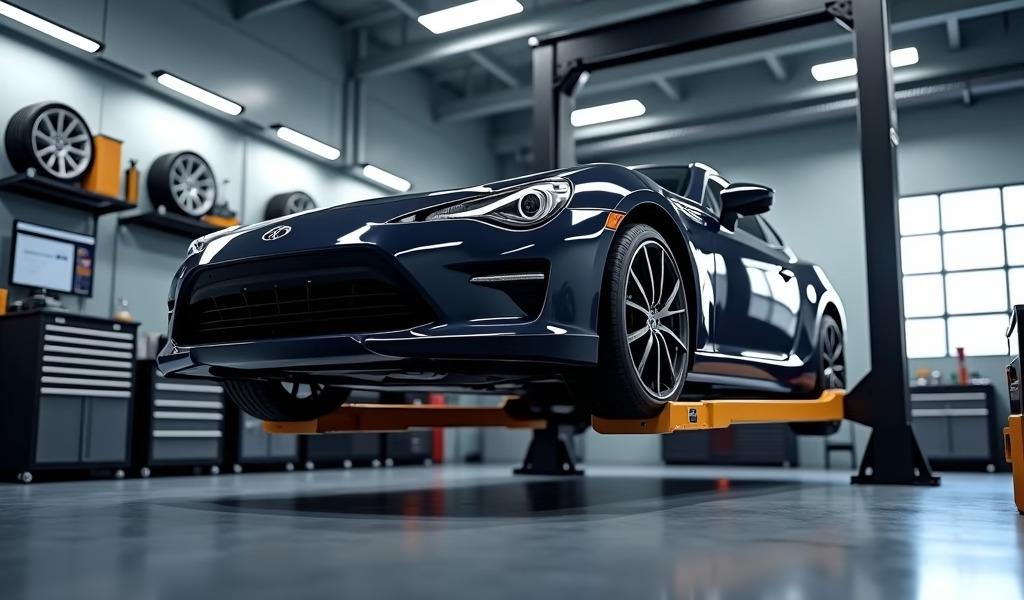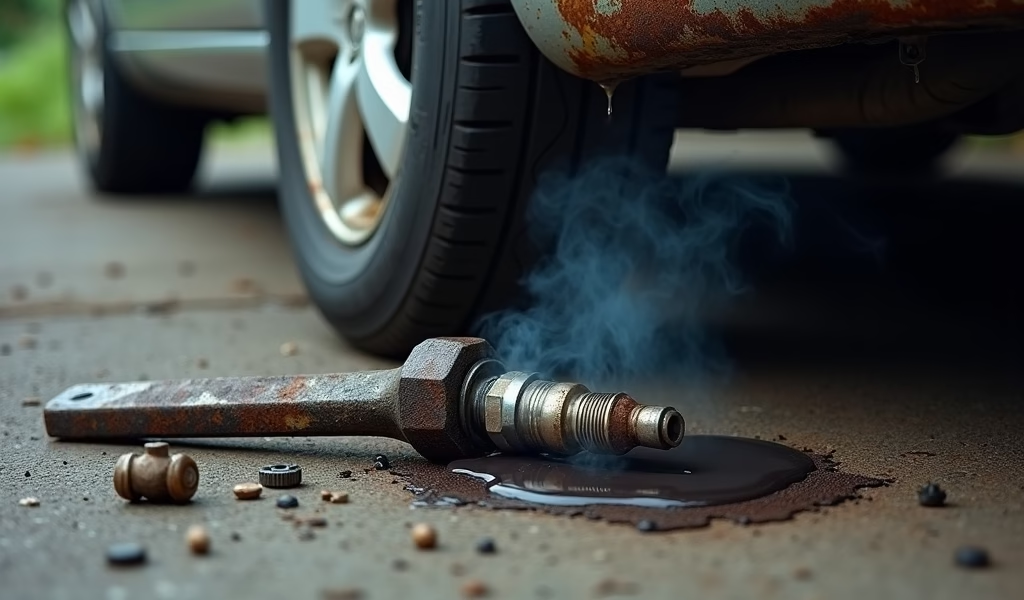Overview
This article provides seven essential DIY car maintenance tasks that every vehicle owner should master, including oil changes, tire care, air filter replacement, battery maintenance, brake inspection, fluid checks, and regular cleaning. By performing these basic maintenance tasks themselves, car owners can save hundreds or thousands of dollars annually while extending their vehicle’s lifespan and creating a deeper connection with their automobile.
Table of Contents
- Why DIY Maintenance Matters
- 1. Regular Oil Changes: Your Engine’s Lifeblood
- 2. Tire Care: Where the Rubber Meets the Road
- 3. Air Filter Replacement: Let Your Engine Breathe
- 4. Battery Care: Preventing Those No-Start Moments
- 5. Brake Inspection: Safety First, Always
- 6. Fluid Level Checks: Keeping Systems Happy
- 7. Keeping Your Car Clean: More Than Just Looks
- Conclusion: Becoming Your Car’s Champion
- Frequently Asked Questions
Why DIY Maintenance Matters
Hey there, fellow car lovers! There’s something incredibly satisfying about rolling up your sleeves and giving your vehicle some personal attention. As someone who’s spent decades under hoods and chassis, I can tell you that maintaining your own car isn’t just economical—it creates a special bond between you and your four-wheeled companion.
Regular DIY maintenance saves you serious money (we’re talking hundreds, even thousands of dollars annually) while giving you intimate knowledge of how your vehicle functions. Think of it as preventative medicine—addressing small issues now prevents major headaches later. Plus, there’s that undeniable pride in knowing you’ve personally contributed to keeping your car running smoothly.
Even if you’re not mechanically inclined, many maintenance tasks are surprisingly approachable. I’ve guided countless nervous first-timers through basic procedures, and the look of accomplishment on their faces afterward is always priceless. Don’t worry—I’ll walk you through everything step by step!
Ready to become your car’s personal caretaker? Let’s jump into seven essential DIY maintenance tips that every car enthusiast should master.

1. Regular Oil Changes: Your Engine’s Lifeblood
If your car’s engine is its heart, then oil is definitely its blood. Clean oil lubricates moving parts, prevents overheating, and carries away harmful debris. After 30+ years as a mechanic, I’ve seen too many engines die premature deaths from oil neglect.
Checking Your Oil Level
- Park on level ground with engine cool (or wait 10 minutes after driving)
- Locate the dipstick (usually has a brightly colored handle)
- Remove, wipe clean with a lint-free cloth, reinsert fully, then check again
- Look at both the level (between MIN and MAX marks) and color (amber is good; dark, gritty oil needs changing)
Performing an Oil Change
- Warm engine for 2-3 minutes to get oil flowing
- Position drain pan under oil plug
- Remove fill cap (top of engine) to help oil drain faster
- Carefully remove drain plug and let oil empty completely
- Replace drain plug with new washer (crucial to prevent leaks!)
- Remove old filter (oil will drip, so position your pan accordingly)
- Apply thin film of new oil to rubber gasket on new filter
- Install new filter (hand-tight plus quarter turn—no tools needed)
- Add fresh oil through fill hole (check manual for type/quantity)
- Run engine for one minute, check for leaks, then recheck level
Most vehicles need oil changes every 5,000-7,500 miles, though synthetic oils may extend this to 10,000+ miles. Your owner’s manual is the ultimate authority here—not the sticker from your last quick-lube visit. Trust me on this one.
Want to see exactly how oil protects your engine? Check out this fascinating breakdown from Popular Mechanics showing oil’s journey through your engine.
2. Tire Care: Where the Rubber Meets the Road
Your tires are literally where all your vehicle’s power and safety systems connect with the road. I’ve seen too many preventable accidents caused by neglected tires—don’t make that mistake!
Pressure Checks (Monthly)
Always check pressure when tires are cold. The correct pressure isn’t the maximum PSI on the tire sidewall—it’s the number listed on your driver’s door jamb or in your owner’s manual. Underinflated tires waste gas and overheat; overinflated tires wear unevenly and reduce traction.
Rotation Schedule (Every 6,000-8,000 Miles)
Different driving wheels wear differently. Front-wheel-drive vehicles are especially hard on front tires. Regular rotation ensures even wear and maximum tire life. The proper rotation pattern depends on your drive type:
- Front-wheel drive: Front tires move to rear, straight back; rear tires move to opposite front
- Rear-wheel drive: Rear tires move to front, straight forward; front tires move to opposite rear
- All-wheel drive: Cross pattern (right-front to left-rear and vice versa)
Tread Inspection
The penny test never fails: Insert a penny into your tire tread with Lincoln’s head upside down. If you can see all of Honest Abe’s head, your treads are too worn for safety. Also check for uneven wear patterns—scalloping or edge wear often indicates alignment issues.
Pro tip: Consider dedicated winter tires if you live in an area with real winter conditions. The difference between all-seasons and winter tires on snow and ice isn’t just noticeable—it’s potentially life-saving. I’ve seen it firsthand countless times with my customers who love movie car replicas but forget real-world safety.
3. Air Filter Replacement: Let Your Engine Breathe
Just like you, your engine needs clean air to perform its best. A clogged air filter restricts airflow, reducing both power and fuel economy. In my experience, this simple 5-minute job can improve fuel economy by up to 10% if your filter was significantly dirty.
Finding and Inspecting Your Filter
Most air filters live in a black plastic box near the top of the engine. Opening this housing usually requires no tools or just basic clips. Hold your filter up to sunlight—if light doesn’t pass through easily, it’s replacement time.
Replacement Process
- Open air filter housing (consult manual if you can’t locate it)
- Note how the old filter sits (take a quick photo if helpful)
- Remove old filter and inspect for unusual debris
- Wipe out any dirt from housing (don’t use chemicals)
- Install new filter in same orientation
- Secure housing properly
Most manufacturers recommend replacing air filters every 15,000-30,000 miles, but dusty environments require more frequent changes. If you regularly drive on dirt roads or in high-pollution areas, check your filter every 10,000 miles.
4. Battery Care: Preventing Those No-Start Moments
Even in our high-tech automotive world, most vehicles still rely on a basic lead-acid battery to power everything. In my 30+ years as a mechanic, I’ve rescued countless stranded drivers who could have avoided trouble with simple battery maintenance.
Warning Signs of Battery Issues
- Engine cranks slowly when starting
- Headlights dim noticeably, especially at idle
- Electrical systems behave erratically
- Battery warning light illuminates
- Battery is more than 3-5 years old (especially in extreme climates)
Terminal Cleaning
That white, powdery substance on battery terminals is corrosion that restricts electrical flow. Cleaning it is simple:
- Disconnect cables (ALWAYS negative/black first, then positive/red)
- Mix baking soda and water to create a paste
- Scrub terminals and cable ends with a wire brush
- Rinse with clean water and dry thoroughly
- Reconnect cables (ALWAYS positive/red first, then negative/black)
- Apply petroleum jelly or commercial terminal protectant
Testing Battery Health
Many auto parts stores offer free testing. Alternatively, use a multimeter to check voltage yourself. A healthy battery reads around 12.6V when the engine is off and 13.7-14.7V when running.
Studies by the American Automobile Association show that batteries in extreme climates often last just 3 years—about half their expected lifespan. If you live somewhere very hot or cold, be proactive about replacement.

5. Brake Inspection: Safety First, Always
Your brakes are undoubtedly your vehicle’s most critical safety system. While complex brake repairs should usually be left to professionals, basic inspection and maintenance are definitely DIY-friendly.
Warning Signs That Demand Attention
- Squealing, grinding, or squeaking sounds when braking
- Vibration or pulsation through the brake pedal
- Vehicle pulls to one side during braking
- Brake pedal feels “spongy” or soft
- Brake warning light illuminates
Checking Brake Fluid
The brake fluid reservoir is typically located on the driver’s side of the engine compartment. The fluid should be clear to amber (never dark brown) and between the “MIN” and “MAX” lines. Dark fluid indicates it’s time for a complete flush—something best done professionally unless you have proper bleeding tools.
Visual Pad Inspection
Most brake pads can be checked without removing wheels. Just peek through the wheel spokes with a flashlight, looking at the pad material pressed against the rotor. You should see at least ¼ inch of pad material. Many pads also have wear indicators—metal tabs that contact the rotor when pads are worn down.
Remember: While checking fluid and visually inspecting are DIY-friendly, actual brake component replacement is best left to professionals unless you have significant mechanical experience. Your life literally depends on these components working correctly.
6. Fluid Level Checks: Keeping Systems Happy
Your car depends on various specialized fluids to operate properly. Regular checks help catch problems before they become expensive repairs. Here’s what to monitor:
Coolant/Antifreeze
This keeps your engine from freezing in winter and overheating in summer. Check ONLY when engine is cold by examining the translucent reservoir (never open the radiator cap on a warm engine!). The fluid should be between “MIN” and “MAX” marks and match the color specified by your manufacturer (green, orange, pink, or yellow).
Transmission Fluid
Healthy transmission fluid should be red or pink, never brown or burnt-smelling. Many newer vehicles have sealed transmissions without dipsticks—these require professional service. For vehicles with dipsticks, check with engine running and warmed up, following your manual’s specific procedure.
Power Steering Fluid
The small reservoir in your engine bay should contain clear to amber fluid between the level markings. Foamy or dark fluid indicates problems that need professional attention. Low fluid often points to a leak that should be addressed promptly.
Brake Fluid
Beyond the level check mentioned earlier, also note that brake fluid is hygroscopic—it absorbs moisture from the air. This is why even if the level is fine, a complete flush is recommended every 2-3 years to maintain proper braking performance.
Pro tip: When topping off any fluid, always use the exact type specified in your owner’s manual. Mixing fluid types can cause serious system damage. I’ve seen too many car characters in my shop who learned this lesson the expensive way.
For a deeper understanding of how these fluids work together, check out this excellent vehicle fluid guide from Edmunds that explains each system in detail.
7. Keeping Your Car Clean: More Than Just Looks
Car cleaning isn’t merely cosmetic—it’s about preservation and prevention. Regular cleaning prevents corrosion, preserves materials, and helps you spot potential issues early.
Exterior Washing Best Practices
- Use automotive-specific soap (dish detergent strips protective wax)
- Work from top to bottom, rinsing frequently
- Use a microfiber wash mitt—never sponges or brushes
- Pay special attention to wheel wells and undercarriage, especially in winter
- Dry with a microfiber towel or chamois to prevent water spots
Protective Waxing
Apply quality car wax every 3-4 months to shield paint from UV damage, acid rain, and environmental contaminants. Think of it as sunscreen for your vehicle. Modern synthetic waxes offer excellent protection with minimal effort.
Interior Care
The inside of your car contains various materials requiring different care approaches:
- Vacuum thoroughly, including under seats and mats
- Use appropriate cleaners for different surfaces (leather conditioner for leather, vinyl cleaner for vinyl, etc.)
- Protect dash and interior plastics from sun damage with UV protectant
- Clean spills immediately to prevent staining and odors
- Keep interior air fresh by replacing cabin air filters regularly
A clean engine bay makes spotting leaks and problems much easier. When cleaning under the hood, always ensure the engine is cool, cover sensitive electrical components, use appropriate degreaser, and avoid direct high-pressure spray on electrical parts.
Conclusion: Becoming Your Car’s Champion
Taking a hands-on approach to vehicle maintenance creates a special connection between you and your car. Like any good relationship, the more you invest, the more you get in return—reliability, performance, and longevity.
These seven maintenance tasks represent the foundation of good vehicle care. By incorporating them into your routine, you’ll save significant money, gain valuable mechanical knowledge, and likely extend your car’s useful life by years. Even tackling just a few of these tasks can make a meaningful difference.
Of course, know your limits. Some repairs truly do require professional training and specialized equipment. There’s no shame in handing off more complex jobs to a trusted mechanic—in fact, it’s the smart move when you’re uncertain.
Remember that regular maintenance isn’t just about avoiding breakdowns—it’s about peace of mind. There’s something deeply satisfying about hitting the open road knowing you’ve personally ensured your vehicle is in top condition. That’s the true reward for car lovers who embrace DIY maintenance.
What DIY maintenance tasks do you perform on your vehicle? Have you saved a significant amount through self-service? I’d love to hear your experiences in the comments below!
Frequently Asked Questions
How often should car lovers change their oil?
Most modern vehicles need oil changes every 5,000-7,500 miles with conventional oil, or 7,500-10,000 miles with full synthetic. Always refer to your owner’s manual for the manufacturer’s specific recommendation.
What’s the easiest DIY maintenance task for beginners?
Checking and topping off fluids is the perfect starting point for beginners. This simple task requires no special tools and helps you become familiar with your engine bay layout.
Can DIY maintenance void my car’s warranty?
No, performing your own maintenance cannot void your warranty under the Magnuson-Moss Warranty Act. Just keep detailed records and receipts of all parts and materials used.
What basic tools do car lovers need for DIY maintenance?
Start with a basic socket set, screwdrivers, pliers, jack and stands, oil filter wrench, and funnel. Add specialized tools as you tackle more advanced projects.
How much money can I save with DIY car maintenance?
The average DIY enthusiast saves $500-$1,000 annually on basic maintenance. Oil changes alone can save $20-$40 each, while more complex jobs like brake pad replacements can save $150-$300 per axle.

